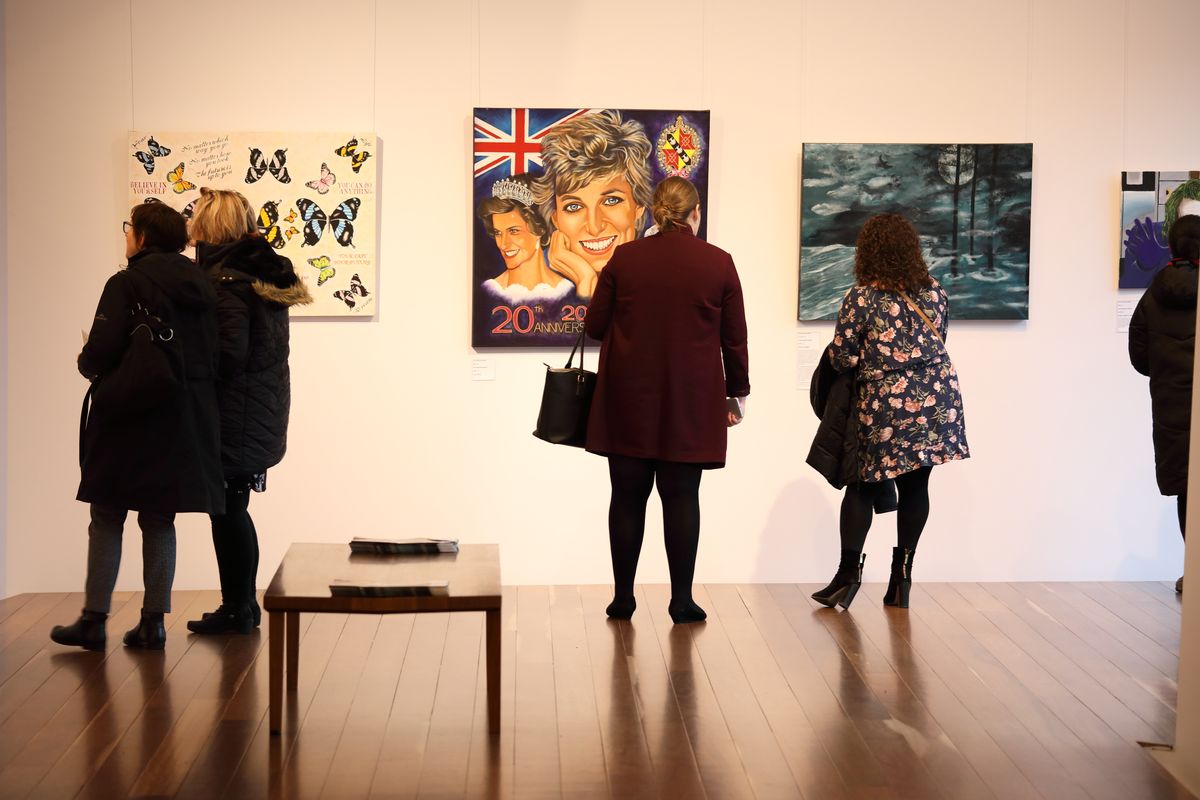
The seventh Art by Prisoners exhibition is part of the current SALA Festival, with College of Business, Government and Law PhD candidate Jeremy Ryder producing the exhibition and its awards program at the Kerry Packer Civic Gallery in the city.
This exhibition comprises work created by people incarcerated in South Australia’s nine adult prisons.
“Art by Prisoners uses art to create positive and constructive pathways to community participation,” says Mr Ryder, who is now a policy and project officer with the Department for Correctional Services, which is a supporter of the exhibition along with the Hawke Centre and SA Commissioner for Victims’ Rights.
“It also acknowledges the contribution of prisoners through awards for creative excellence,” he says, urging the public to give their comments on the works by voting and providing feedback.
“These exhibitions are also a cultural backdrop against which to reflect on the challenges faced by those experiencing incarceration as well as the challenges faced by the system and the broader community when it comes to re-offending, growing prisoner populations and Aboriginal over-representation,” Mr Ryder says.

The South Australian prison population has increased seven times faster than the general population over the previous 10 years, experiencing the second fastest rise nationally.
At 30 June 2007 there were 1752 prisoners in custody, 118 were female. At 30 June 2017 that number was 3032, 212 of which were female. Just under half had previously been imprisoned under sentence.
Over the past 15 years, South Australia has nearly doubled the rate at which it incarcerates Aboriginal and Torres Strait Islander people. In 2017, Aboriginal people made up around 2% of the general population, but 23% of the prison population.
The annual cost to maintain a person in custody in South Australia is around $100,000.
In an effort to slow the rate of incarceration, the State government has committed to reduce re-offending by 10% by 2020.
Programs to increase education, training and employment pathways as well as housing support are the foundation of this initiative, according to the ABS Strategic Policy Panel report ‘A safer community by reducing reoffending: 10% by 2020’ and academic articles.
At this year’s Adelaide Festival of Ideas, Mr Ryder took part in a panel that explored arts in prisons, along with Sally Francis who runs the arts in health program at Flinders Medical Centre, and an artist who works for NEAMI using arts as a way to help those struggling with mental health, depression and isolation.
Mr Ryder based his PhD on data collected from the first three Art by Prisoners exhibitions (2012-2014).
“My study looks at what it means to produce art in prison,” he says. “It also examines what it means for members of the community who encounter the art and respond to it, as well as what it meant to the prisoner artists to read those responses.
“The exhibitions were moments where the public could unite in support of prisoners’ inclusion in the community.
“They were events that allowed prisoners to challenge negative stereotypes and to demonstrate that they could ‘do good’ despite being defined because they did wrong.”
The exhibition runs at the Kerry Packer Civic Gallery in the Bob Hawke Prime Ministerial Centre at UniSA City West Campus until 31 August.

